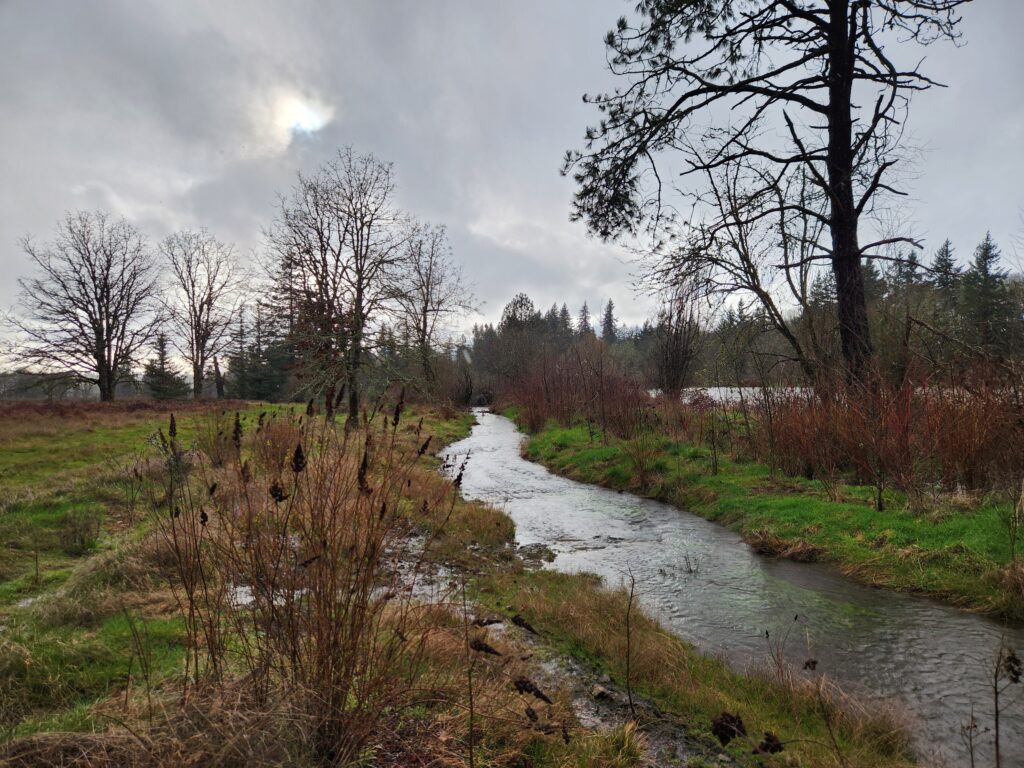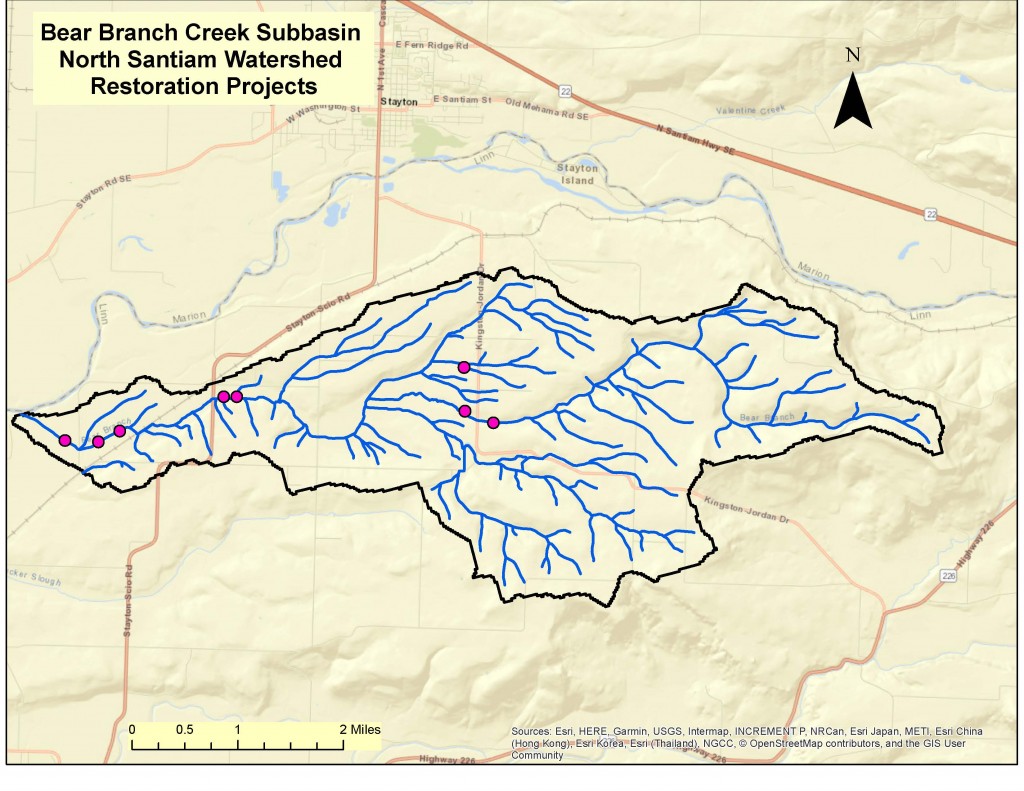Total Subwatershed Accomplishments at a glance...
- Landowners: 7
- Project Sites: 8
- Active Project Acres: 135 acres
- Total Habitat Restoration: 265 acres
- Project Types: Instream, Riparian, Wetland Prairie, Oak Savanna, & Woodland Habitat Restoration
- Activites: Removal of Invasives, riparian fencing, oak release, planting & inter-planting of native trees and shrubs, spring & fall plant establishment activities
- Funding Sources Leveraged: OWEB, MMT, USFWS Partners Program - EQIP, FSA and NRCS - CREP, One Tree Planted, Arbor Day Foundation, Linn Soil & Water Conservation District (in-kind), Private Landowner Contibutions (cash & in-kind)
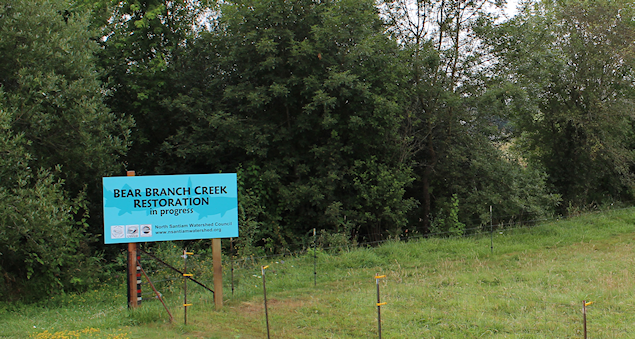
Watershed Quick Facts
Size of land area that drains into Bear Branch Creek – 13 square miles
Length of Bear Branch Creek – 10 miles
Range of elevation – 348-1263ft
How land in the Bear Branch Creek Watershed is used – Historically, the Bear Branch watershed contained extensive wetland areas that helped trap sediments and accumulate nutrient-rich soils. Overtime, the land area surrounding Bear Branch Creek was developed, and there was an increased use of the land for agriculture and grazing on it’s fertile land. It is still currently used by a variety of diverse water users, including rangeland and cropland agriculture, rural residential landowners, forestry, and urban landowners.
Why is Bear Branch Creek an important creek?
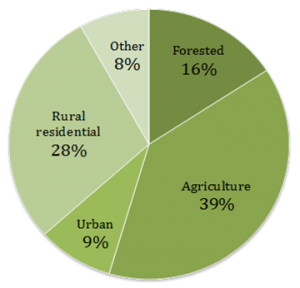
Current Restoration on Bear Branch Creek
In 2017, the North Santiam Watershed Council was awarded funding for restoration work on over 265 acres of land in the Bear Branch subbasin. The project sites take place on private lands whose property owners have had in their family for over 130 years! Nearby restoration efforts had inspired these landowners, whose overall goal was to leave a legacy for their family and generations to come. With this in mind, a large collaborative partnership developed to help enhance and restore the lands from what was once used for grazing, to more natural conditions.
In collaboration with U.S Fish & Wildlife Service, Oregon Department of Fish & Wildlife, Oregon Department of Forestry, Farm Services Agency, and many other technical experts, a handful of conservation plans and strategies were developed for the unique ecosystems that were observed on the property.
As of 2024, over 70 acres of beautiful riparian habitat enhancement, and a total of 194 acres of habitat restored in the Bear Branch subwatershed.
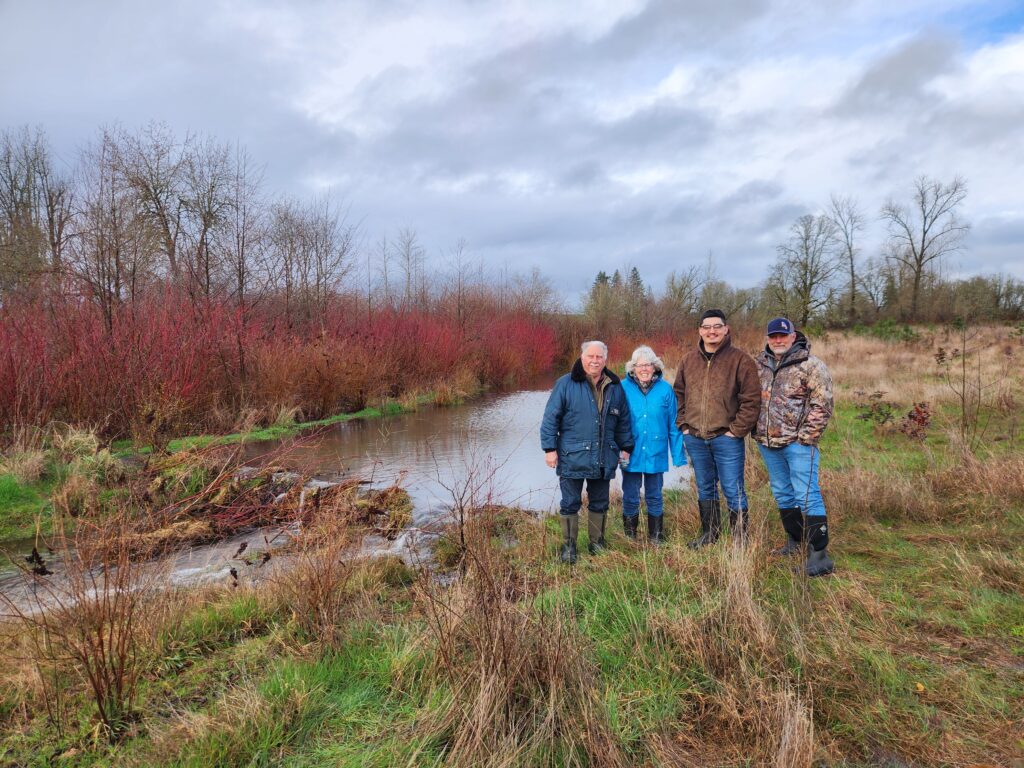 Here we see three generations of family together, after 7 years of restoration activities and next to a very active beaver dam on Bear Branch Creek (February 2024)
Here we see three generations of family together, after 7 years of restoration activities and next to a very active beaver dam on Bear Branch Creek (February 2024)
Bear Branch Subbasin Information
The North Santiam Watershed Council has selected Bear Branch Creek as a priority sub-basin for restoration and enhancement. Bear Branch Creek is an important tributary of the North Santiam River, entering the mainstem just below the town of Stayton. Approximately 13 square miles of land, primarily agricultural and rural residential, make up the land area that drains into Bear Branch Creek.
In 2009, Bear Branch Creek was selected to be a part of the Willamette Model Watershed Program, a regional program designed to improve watershed health. Since 2009, four landowners have partnered with the Council to restore approximately 26 acres of native vegetation on Bear Branch Creek. Restoration on Bear Branch Creek has included clearing of invasive species, planting of native trees and shrubs, and a robust maintenance system to ensure that plants can be “free to grow.” Through continued maintenance, the Council hopes to create a mature riparian buffer of native trees and shrubs that can provide shade and habitat for fish and wildlife habitat. Root systems of native plant species also provide some stability to streambanks and filter water entering the system through the subsurface.
Restoration and conservation efforts along the Bear Branch Creek tributary to the North Santiam River are part of a larger regional initiative to improve water quality. Restoration efforts in Bear Branch Creek are ongoing. The North Santiam Watershed Councils hopes to continue to partner with landowners in the Bear Branch Creek watershed on restoration projects.
- What kinds of fish use Bear Branch Creek?
Over the last ten years, fish surveys conducted by the Oregon Department of Fish and Wildlife have shown the presence of a number of different species, including cutthroat trout, summer steelhead, dace, redside shiner, peamouth, sculpin, brook lamprey, northern pikeminnow, and three-spine stickleback. These studies also indicated that Bear Branch Creek offers valuable habitat for native fish, including Upper Willamette winter steelhead. Bear Branch Creek has 3.6 stream miles of potential rearing/migration habitat for spring Chinook and 3.9 stream miles of potential rearing/migration habitat for winter steelhead.
